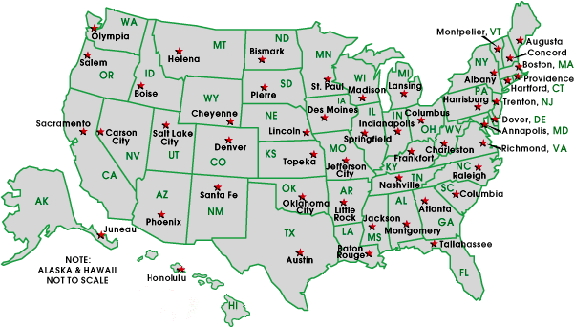Top 10 Richest Countries
1. Qatar: GDP of $88,222
Qatar has flourished alot in the last few years with sustained
elevated authentic GDP growth in 2011. Qatari establishment throughout
the monetary crisis wanted to protect the local banking sector with
direct investments into domestic banks. GDP rebounded in 2010 largely
due to the augmentation in oil prices and 2011′s growth was supported by
Qatar’s investment in expanding its gas sector. Qatar’s proved reserves
of natural gas exceed 25 trillion cubic meters, more than 13% of the
world total and third largest in the world.
2. Luxembourg: GDP of $81,466
This little, constant, lofty-income economy – profiting from its immediacy to France,
Belgium, and Germany has in history featured solid growth, low
inflation, and low redundancy. The industrial sector, at first
subjugated by steel, has developed into an increasingly diversified to
take in chemicals, rubber, and other products. Growth in the financial
sector, which now accounts for about 28% of GDP, has more than
remunerated for the decline in steel.
3. Singapore: GDP rate of $56,694
As stated by the Economy Watch, “Singapore is one of the most open,
and thus competitive, markets in the world. The 2011 World Bank Ease of
Doing Business Index ranks Singapore as the best country in the world to
do business – ahead of Hong Kong and New Zealand. Singapore is also
ranked third in the World Economic Forum’s Global Competitiveness Report
behind Switzerland and Sweden”
-Economy Watch
4. Norway: GDP of $51,959
Norway carry on taking advantage from its fighting fit administer
petroleum assets and sound macroeconomic policies, achieving levels of
well being and communal unity that have remained high by
intercontinental values. The strength of the economy and cautious
supervision have helped the financial system to weather the financial crisis well.
5. Brunei: GDP of $48,333
Brunei has a small well-to-do economy that encompasses a mixture of
foreign and domestic entrepreneurship, government regulation, welfare
measures, and village tradition. Crude oil and natural gas production
account for just over half of GDP and more than 90% of exports. Per
capita GDP is among the highest in Asia, and substantial income from
overseas investment supplements income from domestic production. The
government provides for all medical services and free education through
the university level and subsidizes rice and housing. A new monetary
authority was established in January 2011 with responsibilities that
include monetary policy, monitoring of financial institutions, and currency trading activities.
6. United Arab Emirates: GDP of $47,439
There is a variety of deviating estimates regarding the actual growth rate of the nation’s GDP, however all obtainable figures
point that the UAE at present has one of the best growing economies in
the world. According to a recent report by the Ministry of Finance and
Industry, nominal GDP rose by 35 per cent in 2006 as compared with $130
billion in 2005
7. United States: GDP of $46,860
Being the super power of the world America stands as the number seven
richest country among the world. About 60% of the global currency
reserves have been invested in the United States dollar, while 24% have
been invested in the euro. The country is one of the world’s largest and
most influential financial markets. Foreign investments made in the
United States total almost $2.4 trillion, which is more than twice that
of any other country.
8. Honkong: GDP of $45,944
Though not an independant country but as one of the world’s most
important global financial centers, Hong Kong has a main entrepreneur
service economy characterized by short duty and free trade, and the
currency, Hong Kong dollar, is the ninth most traded currency in the
world. Hong Kong has remained as the world’s freest economy, according
to Index of Economic Freedom since the inception of the index in 1995.
9. Switzerland: GDP of $41,950
Switzerland has an extremely flourishing marketplace economy based on
worldwide trade and banking. Its principles of living, worker
productivity, quality of education, and health care
are superior to any other European country. Inflation is low, and
redundancy is trifling. The economy is heavily dependent on foreign
guest workers, who represent about 20% of the labor force. Agriculture
employs less than 5% of the population, and since only 10% of the land
is arable, the primary agricultural products are cattle and dairy goods;
grains, fruits, and vegetables are also grown, and there is a large
chocolate-processing industry. Her most important trading associates are
Germany, Italy, France, the United States, and Great Britain.
10. Netherlands: GDP of $40,973
The Netherlands is intensely modern and industrialized country. The
leader industries are food processing, petroleum refining, and the
manufacture of chemicals, electrical machinery, metal products, and
electronics. The country’s only some natural resources include coal,
natural gas, and petroleum. An extensive quantity of the country’s
wealth is added annually by monetary and transportation services.
Amsterdam is one of the world’s major financial centers, and Rotterdam
is one of the world’s busiest ports. The Netherlands has a great foreign
trade. The main exports are machinery, chemicals, natural gas,
processed foods, and horticultural products. Imports include machinery,
transportation equipment, chemicals, fuels, foodstuffs, and clothing.
The main trading partners are Germany, Belgium, France, and Great Britain. This makes her to be listed among the richest countries of the world.










No comments:
Post a Comment